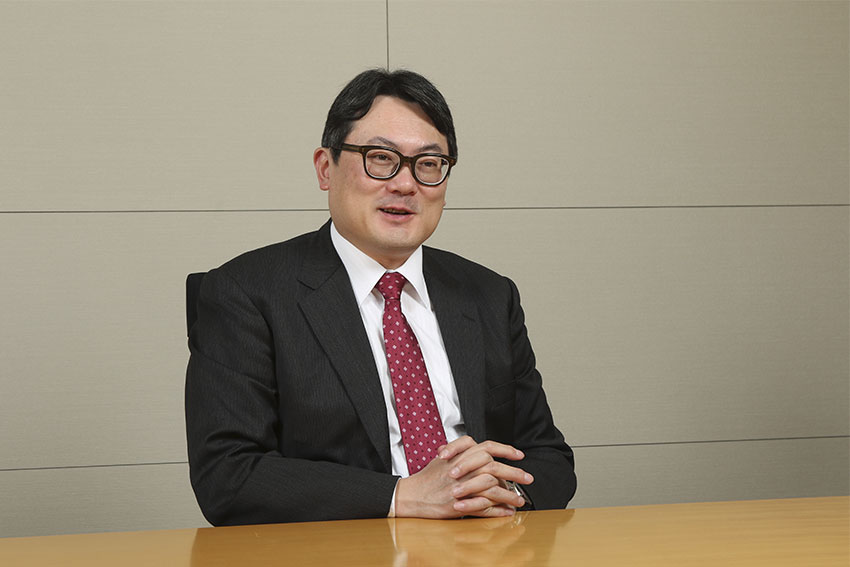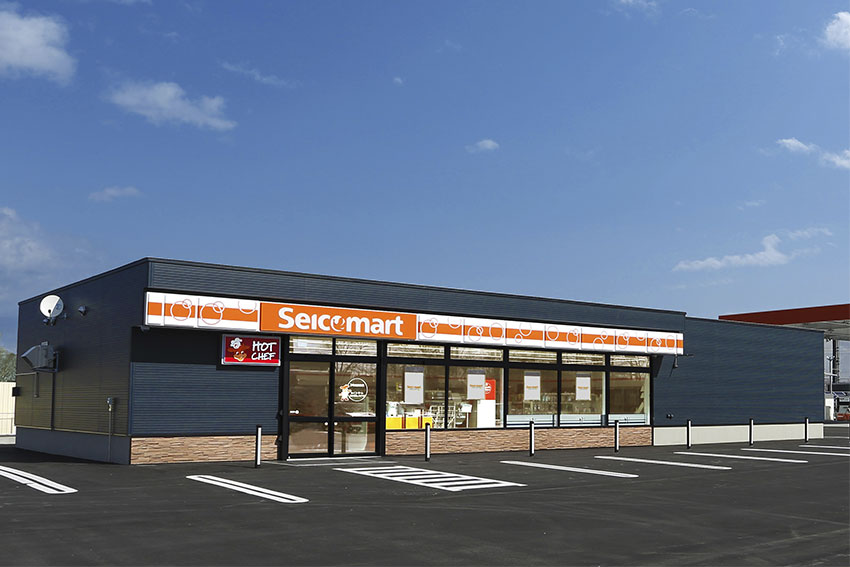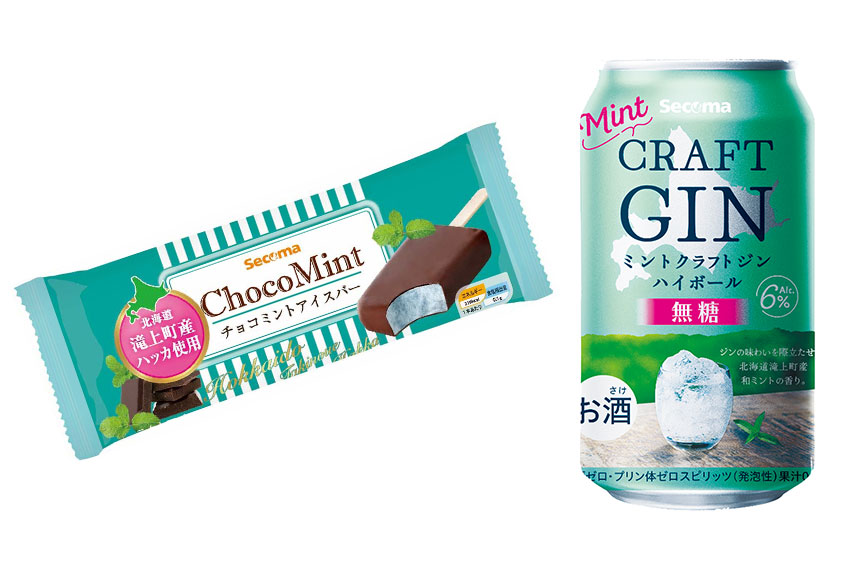SECOMA Delivers Quality and Efficiency with an Integrated Supply Chain Covering Production, Logistics, and Retail Excellence.

Japan's food-related exports have been performing well over the past decade, surpassing 1.45 trillion yen last year. In light of this, the Japanese government aims to further accelerate this growth, setting an ambitious target of 5 trillion yen by 2030. To achieve this goal, the government is encouraging Japanese companies to look overseas and transition to more global business models. From your perspective, what do you think is driving the continuous and record-breaking popularity of Japanese food internationally? Additionally, with this more globalized business model in mind, how is your company positioning itself to seize this opportunity?
The government's future target is highly ambitious. However, as a company that primarily focuses on the domestic market, we are placing greater emphasis on our efforts within Japan rather than aligning with the government’s goal of targeting overseas markets. We are a domestically-oriented company operating retail stores in Hokkaido, and we aim to strengthen our presence locally rather than expanding abroad.
One of the major challenges Japan faces is population decline. Japan has the world's most rapidly aging population, and this trend continues year by year. This has led to various issues, such as a shrinking domestic market and difficulties in workforce recruitment. It is predicted that Japan will face a labor shortage of over 10 million workers by 2040. As a result, there will be a growing need to adopt new technologies and hire foreign staff from overseas. From your perspective, what strategies are you implementing to tackle this significant challenge?
The shrinking domestic market due to population decline poses a major challenge for companies operating within Japan. However, this does not mean our business is struggling—quite the opposite. Adapting our approach to both existing and potential customers and finding new ways to engage them is crucial. One of our company’s biggest strengths is that the production and manufacturing of our main product ingredients take place within Hokkaido. By leveraging our relationship with the local community and increasing interest in both new and existing products, we believe we can drive more customers to visit Seicomart.
We have a strong presence and high brand recognition within Hokkaido due to the number of our stores. However, our exposure outside of Hokkaido remains limited. One approach we can take is expanding our store count in Ibaraki Prefecture, where we have already established a presence. Additionally, distributing our products in supermarkets and drugstores outside of Hokkaido is another way to address the challenge of a shrinking domestic market. We believe there are many opportunities to explore within Japan before looking overseas.
Another measure to address population decline is the implementation of automation and digital transformation (DX). We are continuously researching ways to achieve this. Hokkaido is a low-population-density region, making labor shortages more severe compared to other areas.
This issue requires companies to develop management strategies to sustain their business activities. We are actively investing in our factories to advance mechanization and are streamlining store operations through the introduction of digital solutions.

You mentioned the importance of introducing new products to give customers a reason to return to stores. Among the new products released in the past one to two years, which ones are your favorites?
We believe there are three main directions for our product planning and development. The first is developing new products based on recommendations of ingredients from local sources. We actively explore local areas to discover new ingredients. The second is seasonal products. Japan has four distinct seasons, each with foods traditionally consumed during that time. Utilizing ingredients at their seasonal peak is one reason for introducing seasonal limited-time products. The third is the renewal of existing products. We value traditional menu items that have been enjoyed for generations and continuously research and refine them to develop even better products.
One of our most popular recent products features Japanese mint (wa-shu hakka) grown in Takinoue Town, Hokkaido. Historically, before World War II, two-thirds of the world's mint production came from Hokkaido. Since then, China and India have become the primary producers of mint oil. Today, only a small part of the Kitami region continues production, and in 2017, we established a partnership with producers in Takinoue Town to source mint oil. Since then, we have launched new products featuring Japanese mint, including ice cream, soft drinks, alcoholic beverages, and candies.
Our initiative also contributes to increasing awareness of wa-shu hakka, which has been attracting growing attention. Moving forward, we aim to introduce more Japanese mint products to our customers and encourage more people to visit our stores.

Another area of growing attention is sustainability and food waste reduction. Your company has been particularly successful in addressing this through various methods, including the use of upcycled ingredients. For example, you produce biofuel from used cooking oil and make Hokkaido Melon Soft Serve using non-standard melons. Could you share your sustainability goals and explain how they contribute to reducing food waste in your business?
So far, we have been working to build a circular supply chain to maintain both product quality and operational efficiency. The quantity of products we can manufacture depends on the amount of raw materials procured. However, since we source and manufacture ingredients for our own prepared foods, we can manage the entire supply chain—adjusting sales promotions and sales periods based on store performance. This allows us to control waste at both the manufacturing and retail stages.
We are also making efforts in recycling and sustainable resource utilization within our capacity. Ideally, utilizing 100% of raw materials not only reduces waste but also lowers costs. For example, after processing salmon into fillets, we use the meat around the bones for flakes, and some of the internal organs are supplied externally as raw materials for supplements. Of course, it is impossible to eliminate food waste entirely, but we can minimize it as much as possible.
Your company is deeply rooted in Hokkaido, and I understand that you place a strong emphasis on using high-quality local ingredients in your products. This is evident in your unique private-label offerings, such as Hokkaido Milk Ice Cream, as well as the mint-based products you mentioned earlier.
Last year, the number of inbound tourists to Japan reached a record high of 37 million, many of whom visited Hokkaido. The Japanese government has set a goal of increasing this number to 60 million within the next decade. Many tourists are interested in selecting unique delicacies that they cannot find elsewhere.
First, what makes the ingredients from this region so unique? And second, which products would you recommend visitors try when they come here?
Hokkaido is blessed with abundant food resources and a rich natural environment. Climate change is also opening up new possibilities for Hokkaido’s food industry. Salmon, for example, is a representative seafood found in many regions worldwide, and Hokkaido is no exception. Over time, Hokkaido has developed traditional cooking and preservation methods suited to its climate. By transforming these methods into products available in stores, we not only gain support from local customers but also attract interest from tourists. I believe that tourists want to experience an authentic glimpse into everyday life in Hokkaido.
One of Hokkaido’s unique regional products is Kozawae Konjac, a traditional dish made by simmering cod roe and Tsuki Konjac. We have turned this dish into a commercial product. In Tōma Town, Hokkaido, we use the famous Densuke Watermelon, a premium brand known across Japan, to create a unique ice cream. Additionally, since Hokkaido is a major producer of pumpkins, we have developed pumpkin-based sweets and pumpkin ice cream.
Beyond Hokkaido, for example, Ibaraki Prefecture is well known for its sweet potatoes. Since we have store locations in the prefecture, we have established a supply chain for sweet potatoes, allowing us to offer sweet potato ice cream and sweets as recommended products. If you visit a Seicomart in Hokkaido, you will find a wide variety of delicious products made using locally sourced ingredients.
Recently, the proposed acquisition of Seven & I Holdings by the Canadian retail group Alimentation Couche-Tard has generated significant discussion. The deal could be worth as much as 7 trillion yen. Unlike convenience stores in the United States and Canada, convenience stores in Japan are clearly a highly profitable business.
Could you explain to our readers why Japan's convenience stores are so unique? They are characterized by a wide variety of small-quantity food offerings, frequent product renewals, and a strong focus on food freshness. In your opinion, what are the distinctive features of the Japanese convenience store business model?
I believe there are subtle differences between the business models of overseas convenience stores and those in Japan. Both emphasize convenience and provide long-hour, year-round service to the general public. However, it is important to consider the historical context of convenience stores in Japan.
Before the expansion of convenience stores, Japan had a large number of independently owned retail shops. Even today, some family-run stores continue to operate. While these stores are not necessarily inefficient, convenience stores prioritize operational efficiency and offer a much wider variety of products.
One of the most distinctive aspects of Japan’s convenience store model is its highly optimized product distribution system. The efficiency of logistics and product restocking plays a crucial role in maintaining freshness and variety, making Japanese convenience stores stand out from their international counterparts.
For national brand (NB) manufacturers, Japanese convenience stores are one of the most important sales channels. NB manufacturers develop products and invest heavily in TV commercials. This was particularly effective in the past because Japanese people frequently watched television. Selling products in convenience stores, which have numerous locations nationwide, was a symbol of success in terms of both volume and efficiency for NB manufacturers.
During the 1980s, as Japan experienced rapid population growth and economic expansion, convenience stores flourished, and various chains emerged. The introduction of 24-hour convenience stores provided the flexibility for people to shop at any time, accommodating the long working hours of Japan’s economic boom.
Do you think the small-batch, high-variety production model in Japanese stores is one of the key factors that allow Japanese companies to generate higher revenue?
Yes. Although there are many similarities in products, some manufacturers focus their research and development solely on meeting the expectations of convenience stores. Since all products sold in convenience stores are expected to be popular, concentrating on tailor-made solutions is one of the ways Japanese manufacturers can maximize profitability.
Earlier, you mentioned collaborating with local suppliers through an integrated supply chain. I understand that your company also has subsidiaries in the United States. What role do overseas suppliers play in your business model, and what is the function of your U.S. office?
Originally, the convenience store business model first emerged in the United States, so our presence there was initially for market research purposes. In Japan, supermarkets began adopting the American retail model, and convenience stores quickly followed suit. We wanted to establish an information hub in the U.S. to gain a better understanding of ongoing trends there.
Additionally, our U.S. office plays a role in sourcing various products from the U.S. However, we are not actively promoting our own products in the American market. If an American company expresses interest in selling Hokkaido products, we handle such requests on a case-by-case basis.
During our research, we found that your company is particularly focused on leveraging and expanding its network in Taiwan. What strategies are you using to achieve this, and how can an integrated supply chain help maximize business expansion overseas?
We do not have a specific strategy for international expansion, nor do we have any major targets for exports to Taiwan. While we do not have a corporate entity in Taiwan, we do have partner companies that support the sale of our products there. However, the number of products we export to Taiwan remains relatively small. We occasionally receive orders for items like instant ramen and alcoholic sour beverages made with Hokkaido fruit juice.
Our company is deeply rooted in Hokkaido, with a long history in the region and a strong local customer base. We place great importance on the local food culture, and rather than directly targeting overseas markets, we believe that strengthening our connection with local customers will ultimately also appeal to international visitors.
Imagine returning for another interview on your last day as president. By that time, what do you hope to have achieved? What personal goals or ambitions do you have for the company?
I do not have specific financial targets in mind. Rather, my goal is to protect what we have and sustain it for as long as possible. Seicomart has built a unique brand. In Hokkaido, almost everyone is familiar with Seicomart.
Moreover, our company has expanded beyond the traditional scope of a convenience store through vertical integration. We operate with the philosophy of being a partner that supports daily life. I hope that all our employees, customers who visit our stores every day, and our business partners can continue working together in an enjoyable way.
For example, I would love for people to be excited when a new Seicomart opens in their neighborhood and to happily share the news with their friends. My goal is to foster a strong community around Seicomart. I want to emphasize this and focus on what we have now.
We will continue creating meaningful stories in Hokkaido, and I hope these stories will live on for generations to come.
For more information, please visit their website at: https://secoma.co.jp/en/index.html
0 COMMENTS